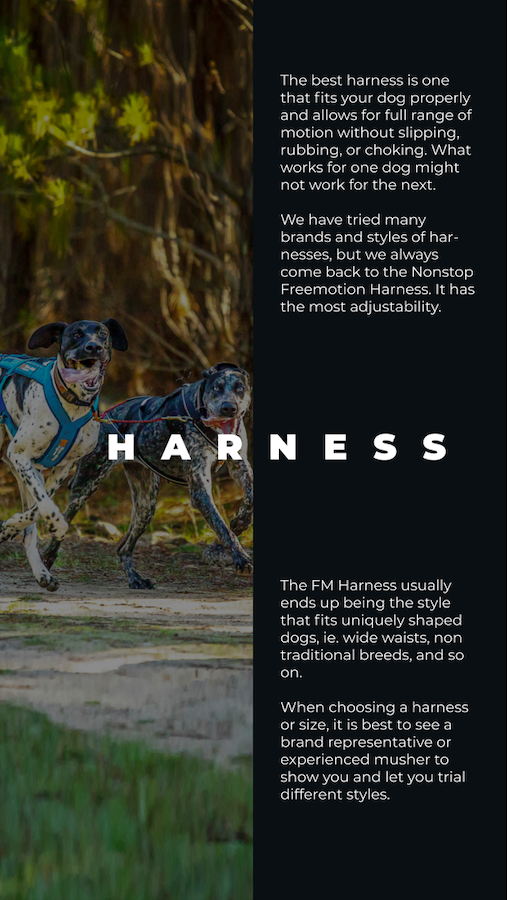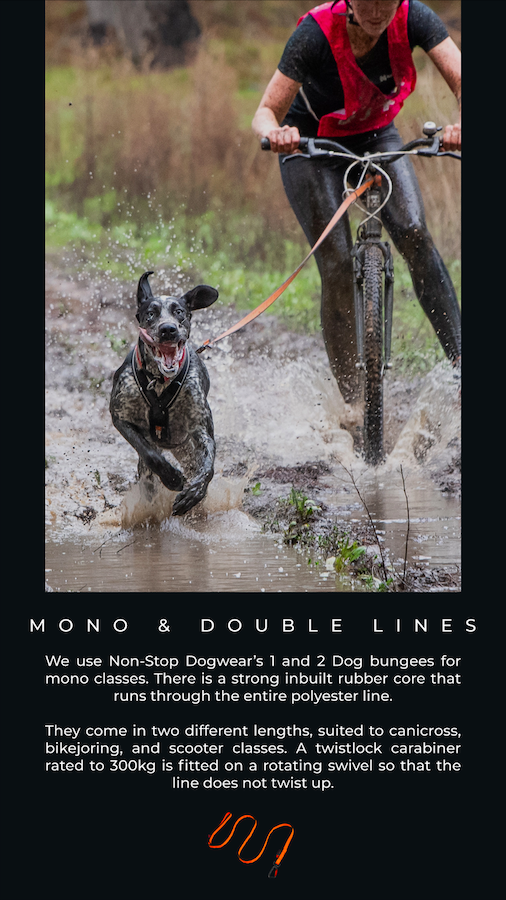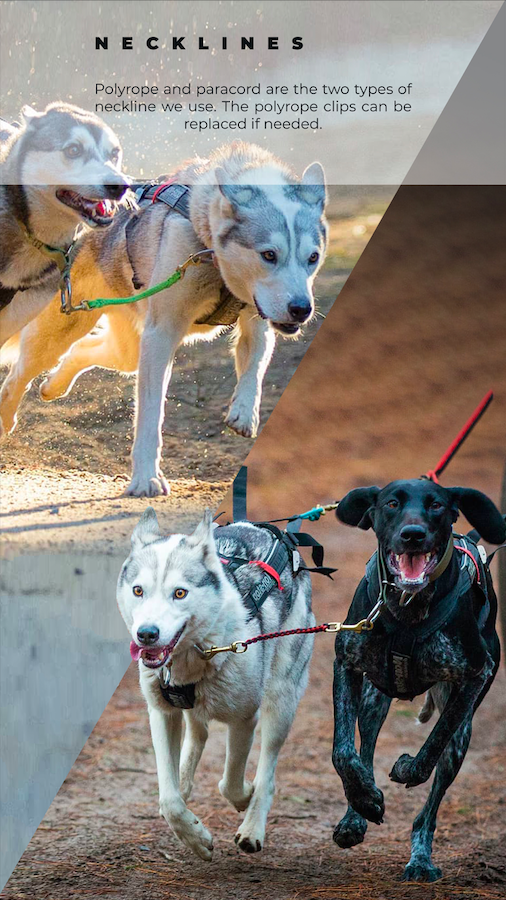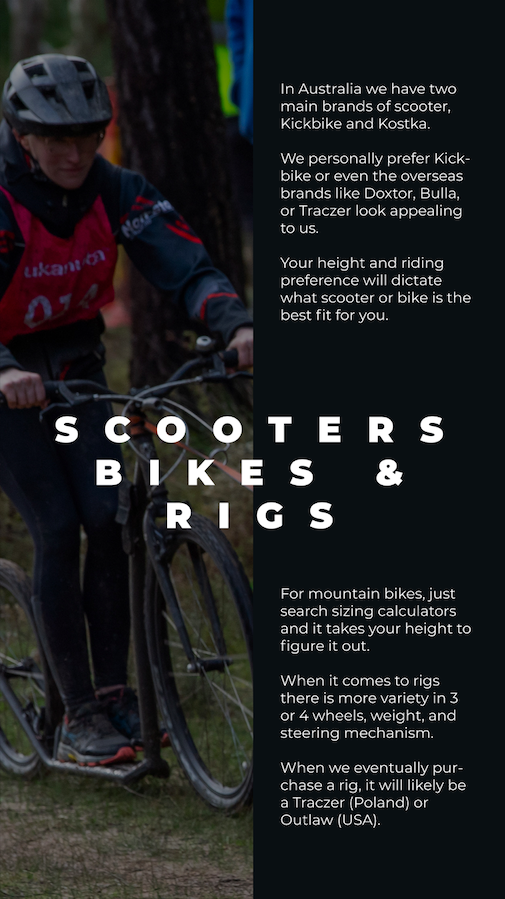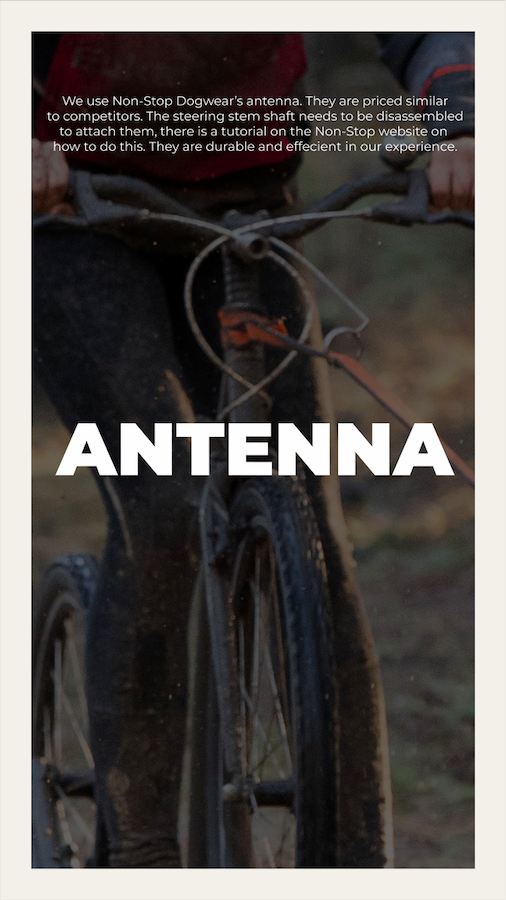SPORTS
CANICROSS
Canicross is the sport of cross country running with dogs. It originated in Europe as off-season training for the mushing community, but it has become popular as a stand alone sport all over Europe, especially in the UK. You can run with one or two dogs, always attached to the runner with an elastic line, which reduces shock to both human and dog when the dog pulls. The runner wears a specialised waist belt, and the dog is best in a mushing harness.


BIKEJOR
Bikejoring is a sport where one or two dogs run in front of a bike, pulling. It has its origin from mushing, where dogs pull the musher on a sled. The dog is connected to the bike with an elastic line, and kept away from the front wheel with an antenna. The dog should wear proper mushing harness designed for pulling, allowing them to move and breathe freely.
Bikejoring can be done both as a hobby and competitively. If you are not able to run yourself, but still want your dog to enjoy the pleasure of running, bikejoring is a great activity!
SCOOTERJOR
No snow? No problem! If your dog already loves to pull you on the bike, you could try Scooterjoring. Scooters are basically mountain bikes with a footplate instead of a seat and pedals. You can do this class safely with one or two dogs, these are the most popular classes in Australia. The same equipment is used as Bikejoring, but a neckline is used to connect two dogs so they stay together for safety reasons. See the bottom of this page for equipment recommendations and where to buy kickbikes or scooters.


RIG
Rig class competes using high performance wheeled ‘rigs’ or carts, designed specially with three or four wheels for the sport. You can run 3 dogs all the way up to 8 dogs, and any breed can compete. There are a considerable number of mushers in Australia competing in these classes.
SLED
In Australia, traditional sled racing exists in the Victorian High Country at Dinner Plain, Falls Creek, Mt Buller, and Mt Baw Baw. Dogs are attached to the sled with the centreline, the musher has a drag mat, claw brake, and snow hooks for braking and stopping the team. You can compete in 2 Dog Sled all the way to 8 Dog, and recent years has seen the introduction to Skijor Class as well (see below). Due to our limited snow season and getting permits, this discipline is a lot bigger in Europe and North America than it is here.


SKIJOR
Modern dog skijoring assists a cross-country skier. One to three dogs are commonly used. The skier provides power with skis and poles, using either a classical diagonal stride or the faster skate skiing technique. The human wears a skijoring belt, the dog wears a mushing harness, and both are connected by an elastic line. Many breeds of dog participate in skijoring, the only prerequisite is a desire to run down a trail and pull, which is innate in many dogs.
F.A.Q.
Frequently Asked Questions
There are many methods people swear by, we have our own as well. Check Non-stop Dogwear’s comprehensive ‘how to’ on this topic. Just send us a message if you need further assistance with trouble shooting or live local to South Australia, we are always happy to help in person.
Any medium to large sized dog that likes to pull, smaller breeds can do Bikejoring and Canicross just fine too since you can give them extra assistance.
Yes we do, we learnt from our mentors and research. The Australian Association of Sleddog Sports (ASSA) has an easy to read Beginners Guide on getting started, including commands, trail etiquette, and general training. If you want further help or specialised advice relating to sleddog sports, we are happy to discuss or meet up on our training sessions.
We do early morning walks and activities such as free running, Canicross (if not above 18cº), and flirt pole sessions. Our dogs also enjoy agility training, swimming, and visiting the beach. We plan to try dock diving in the future with our own dock and pool set up.
You can begin teaching commands and good behaviour such as ignoring other dogs from puppyhood, they can keep active in many other ways like free running at their own pace to begin developing their muscles. Hard exercise and high speeds in harness should not commence until the growth plates are closed, the rules to compete are 12 months old for ASSA and 18 months old for the International Federation of Sleddog Sports (IFSS). The fastest way to know if your dog is ready to begin harder training or racing speeds is to get an x-ray to see the growth plates.

